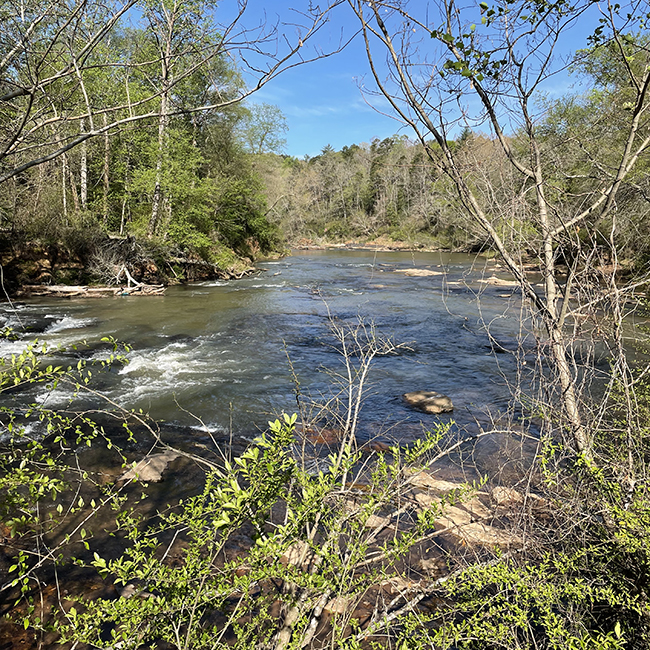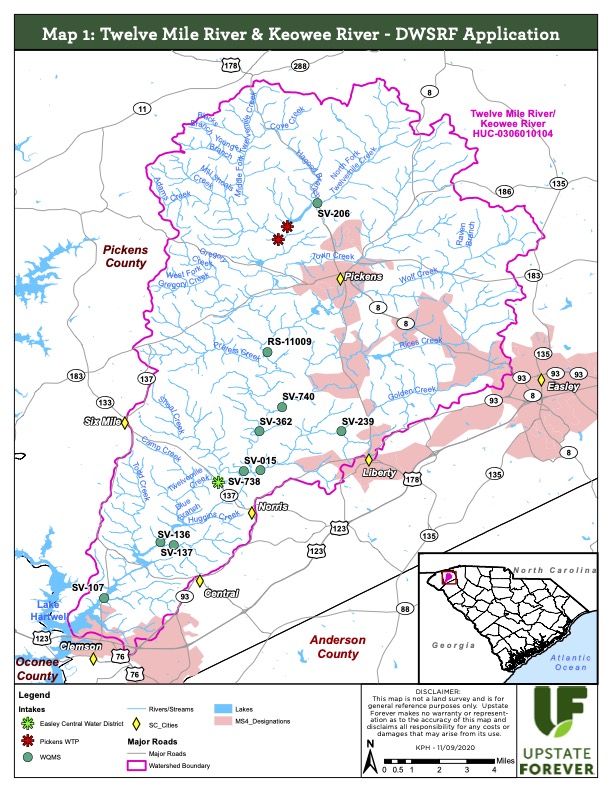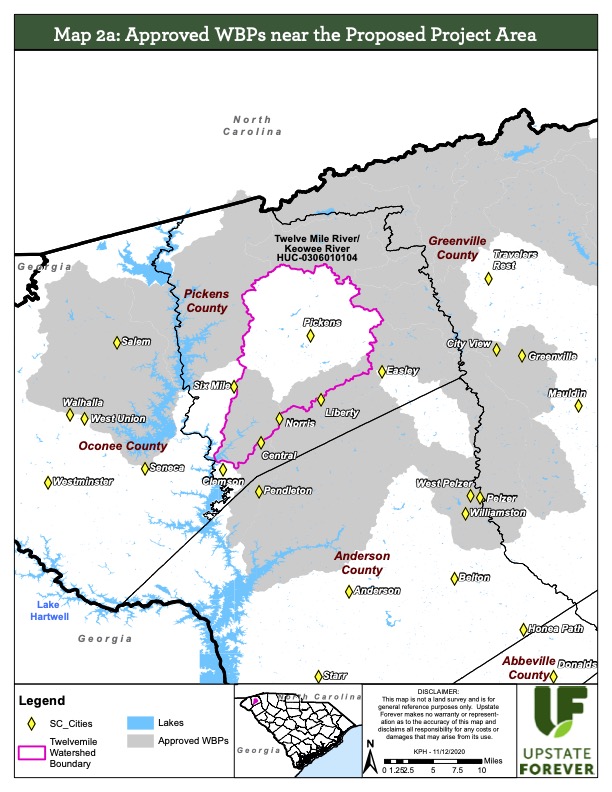Twelve Mile River
In partnership with Upstate Forever, the Center is working to develop a watershed-based plan for eight HUC-12 watersheds that together comprise the Twelve Mile River – Keowee River Watershed HUC-10 watershed (0306010104), within the larger Savannah River Basin. These watersheds contain approximately 371.3 miles of streams and over 98,967 land acres with the primary land uses being forested, agricultural, and urban (Map 1). This portion of the Seneca Watershed includes source (drinking) water intakes and protection areas for the Easley Central Water District (ECWD) and Pickens Water Treatment Plant (Pickens WTP). Collectively, ECWD and Pickens WTP provide drinking water to over 16,300 residents living in Pickens County.

-
A History of Pollution
The Twelve Mile River has a rich history in hydroelectric power and cotton mill production that date back to the late 1800’s when the first two dams (Woodside I and II) were built, supporting the growth of the small town of Cateechee, SC. A third dam (Woodside III) was built further upstream in 1926 to sustain the growing demand for hydroelectric power in the area. Beginning in 1987, the Twelve Mile River was the focus of an U.S. Environmental Protection Agency (EPA) Superfund cleanup project to remove Polychlorinated Biphenyls (PCB) contamination and restore the health of the river (EPA, 2020). In January 2015, contaminated sediment was removed from behind two dams (Woodside I and II), and the dams were dismantled to allow clean sediment to help naturally cap and restore the Twelve Mile River arm of Lake Hartwell.
-
Addressing Current Non Point Source Pollution
Now, sediment and bacteria pollution are the primary pollutants of concern for the waterways in these watersheds; these issues will be addressed in this watershed planning effort. Bacteria pollution can pose a significant threat to human health because its presence indicates the potential for other disease-causing organisms in contaminated waters. A TMDL was developed for the Twelve Mile Creek Watershed, and according to this TMDL, an estimated reduction of 39% in bacteria loading in the northern part of the watershed (SV-206) and 64% in the lower section (SV-015) are needed to attain state water quality standards for water recreation. According to the 2018 303(d) List, the following stations are listed as impaired or not fully supported for bacteria: SV-015, SV-136, SV-137, SV-206, SV-239, SV-362 and RS-11009. Stations SV-738 and SV-740 are listed as impaired for biological criteria; sediment can be a leading cause of these types of impairments.
Upstate Forever and the Center will be conducting stakeholder meetings to bring residents into this conversation of improved management of the Twelve Mile River. Stakeholder meetings will be held each month, on the second Tuesday at 9AM, as part of the Lake Hartwell Partners for Clean Water effort. If you would like to receive an invitation to these stakeholder meetings, we welcome your attendance and input. Simply email Katie Callahan katieca@clemson.edu to be put on the group’s email list.


